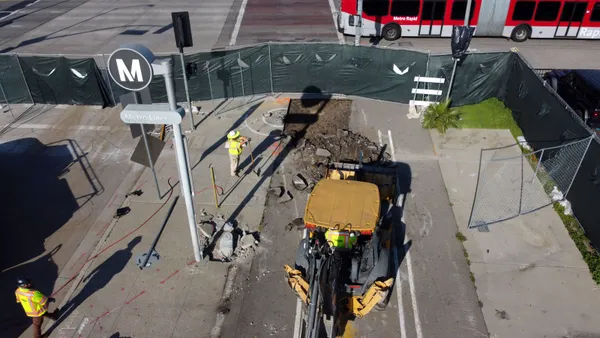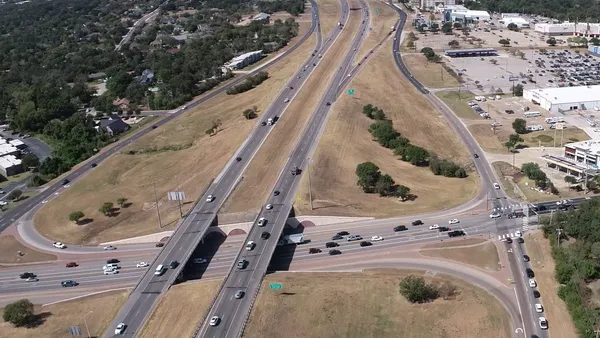Dive Brief:
- Engineers are using outdated temperature data — from 1964 to 1995 — to pick the right temperature-sensitive asphalt blends for use on roads today, Ars Technica reported, citing a new study in Nature Climate Change, which found the mismatch could raise road maintenance costs significantly.
- In a study of nearly 800 asphalt roads built in the U.S. over the last 20 years, researchers found that 35% used an asphalt product ill-suited to current climate conditions. For one-quarter of those cases, the roads weren't built to handle the high temperatures it experienced currently.
- The researchers note that using an asphalt product even one grade short of what would be necessary could cut a few years off the road's life, requiring repaving sooner than anticipated.
Dive Insight:
One in five miles of highway pavement was in poor condition in 2014 with urban roads (32%) worse off than rural ones (14%), according to the American Society of Civil Engineers. Poor roads don't cost only those charged with their maintenance and repairs, however. That level of disrepair caused vehicle operators $112 billion in additional fixes and operating costs that year.
State and local governments paved roads in asphalt when prices for the material were low. Now, they are now rethinking that strategy as construction costs trend upward. To help manage those costs, at least 27 states have turned some of their asphalt roads to gravel, with most of that work occurring in the last five years, the ASCE reported.
Omaha, NE, is one municipality doing just that. The New York Times reported earlier this year that the city decided to convert some asphalt roads, including those in higher-end neighborhoods, to gravel after it struggled to fund repairs, such as filling potholes.
Montpelier, VT, has also made headlines for its de-paving activities. The city saved $120,000 by replacing asphalt on some run-down roads with dirt and gravel reinforced with a geotextile for stability rather than repaving, Wired reported.
A substantial number of de-paved roads are in rural areas that don't see heavy traffic, according to a 2016 study from the National Cooperative Highway Research Program. Still, regardless of their location, drivers aren't necessarily in favor of gravel roads, which generally lead to more wear on their vehicles as compared to asphalt or concrete surfaces.
However, it's likely more state and local governments will look to de-paving as a way to manage road maintenance costs as questions continue around potential new long-term funding sources for infrastructure.















